Once a bastion for elite runners, running form assessment—and the related tweaking of minor maladies—has now made its way to runners of all ages and ability. Why? Well because making a few small adjustments can benefit anyone's time and reduce the chance for injury.
Here are four of the most common biomechanical weaknesses and how to improve them.
The Problem: Overstriding
1 of 9Signs: Pounding feet, tight hamstrings, feeling tired quickly
Many runners have issues relating to overstriding, which occurs when a runner's foot strike is well in front of your body's center of gravity. In other words, your feet should impact either directly beneath the hips or only marginally in front of your mass.
By keeping your feet "underneath you," you will reduce the amount of contact time on the ground, thereby increasing your overall cadence (the number of times your feet strike the ground in a given period).
Additionally, a slightly shorter and more frequent stride rate allows athletes to enter the final 1/3 of distance races with less energy expended.
Find:
Your Next RaceFix It
2 of 9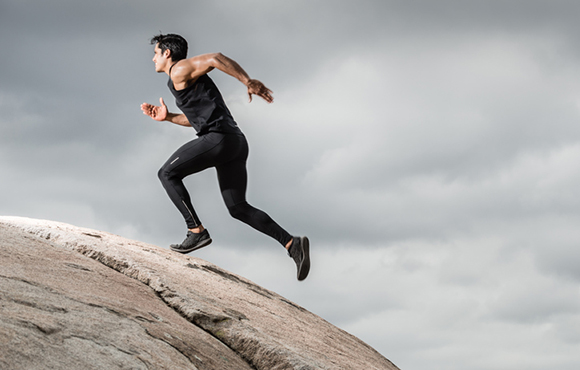
One to two times weekly, conclude an easy run at the base of a hill and run eight 30-second moderate hill repetitions (think 85 percent: not quite all-out, but 5K race effort) on a moderately steep hill (10- to 12-percent grade). Walk to the base of the hill for your recovery before engaging another 30-second hill acceleration.
By their nature, hills biomechanically force the body to naturally pull one's feet under center of mass. They are Mother Nature's cure for overstriding.
You can also try counting your repetition of foot strike for a one-minute period during a run. Most studies based on efficiency show that runners with a cadence count of 180 foot strikes per minute or higher (90 per leg) are most efficient. Are you quite a bit lower? Try abbreviating your stride just a hair to get yourself to 180. If you do this three to four times each run for just one to two minutes, you will find 180 begins to feel very natural.
Find:
Your Next RaceThe Problem: Too Much Twisting
3 of 9
Signs: Feeling like your arms are crossing the center line, tight shoulders, side stitches
A common malady amongst runners, particularly rookies, is the arms moving incorrectly. It's common that when the arm swings, it has too much lateral movement and, in result, the shoulder turn in.
Find:
Your Next RaceFix It
4 of 9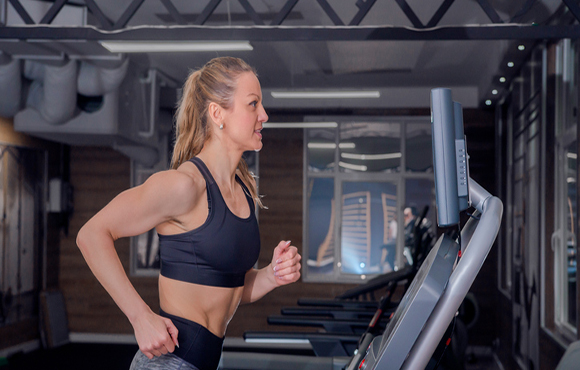
Draw an imaginary center line from your head to your groin. If your hands cross that line while running, work to have them come forward through the hip and to the body's center on the upswing, no farther east/west. For most effective self-tweaking, implement this "fix" while on a treadmill in front of a mirror.
Shoulders with overly forward rotation can inhibit proper diaphragm engagement and increase the lateral motion. After each run, put your hands at eye level on either side of a door frame and walk into the threshold of the door so that the hands are now slightly behind the body, opening up the pectorals and upper back. Hold for four to six seconds and repeat five times.
Find:
Your Next RaceThe Problem: Elevated Shoulders
5 of 9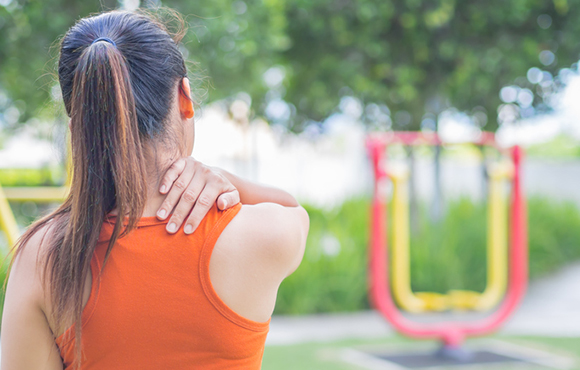
Signs: Strain and tension in the shoulders
When shoulders are too high—close to the ears—a runner's neck, pectorals, intercostal and related muscles easily spasm. When these muscles are in spasm (often an effect of those who spend large amounts of time typing), arm drive is impaired and power reduced.
Find:
Your Next RaceFix It
6 of 9
Shoulders too high are easily remedied. Hunch your shoulders as high as you can, (like you're shrugging) and allow them to drop. This is where your shoulders should be during all training runs and races. This quick fix can be implemented at any point during any run. Additionally, as a means of keeping those muscles relaxed, acquire regular massage work on your back and neck.
Find:
Your Next RaceThe Problem: Collapsed Knees
7 of 9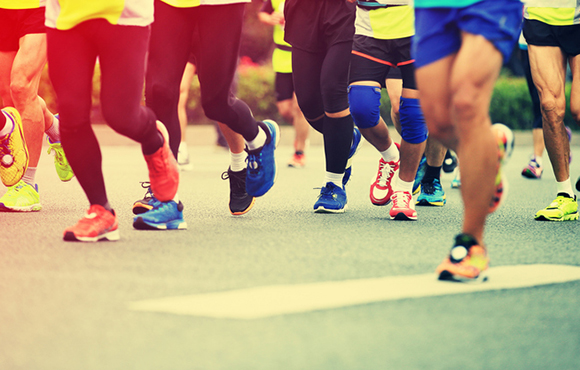
Signs: Knee or hip pain, feet hitting inside of shins
Watch a few dozen runners of varying age and ability at your local park and you are sure to see one common malady: the inward collapsing of the knee. Internal rotation of the knee, highlighted by the knee diving toward the body's centerline as the leg bends on impact, is almost always caused by weakness in the gluteus medius, a critical stabilizer. Weakness in the stabilizers will ultimately result in increased ground contact time, slowing runners down significantly.
Find:
Your Next RaceFix It
8 of 9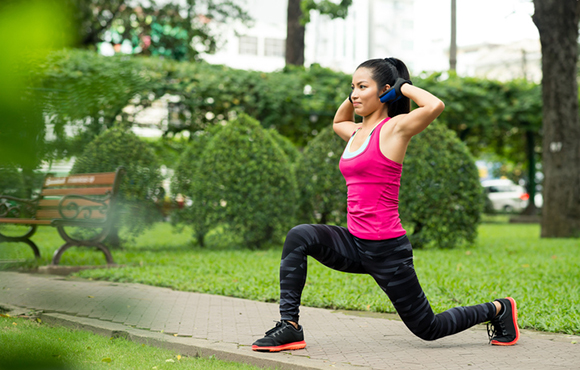
Hip hikes are a simple and effective way of strengthening lateral stabilizers. Stand on one leg on a flat surface and let the other leg hang loosely. With the standing leg, engage the gluteus and pull the limp leg up to an even position (video below). Implement 10 hikes on each leg two to three times weekly.
Standing lunges are an additional effective way to improve lateral stabilization. Standing with legs together, step forward, bending your forward leg while lowering your hips. Make certain that your knee does not protrude over the top of the foot. Keep the knee in a direct line as you lower and bend your forward leg and do not allow the knee to move inward toward the body's center line. Implement 10 lunges on each leg two to three times weekly.
Find:
Your Next RaceRunning Events Near You
Everywhere
-
reg open stg more than 5
city, couty
-
Loch Ness Marathon
d, AS
-
Loch Ness Marathon
d, AS
-
Get ACTIVE on the Go


Couch to 5K®
The best way to get new runners off the couch and across the finish line of their first 5K.
Available for iOS | Android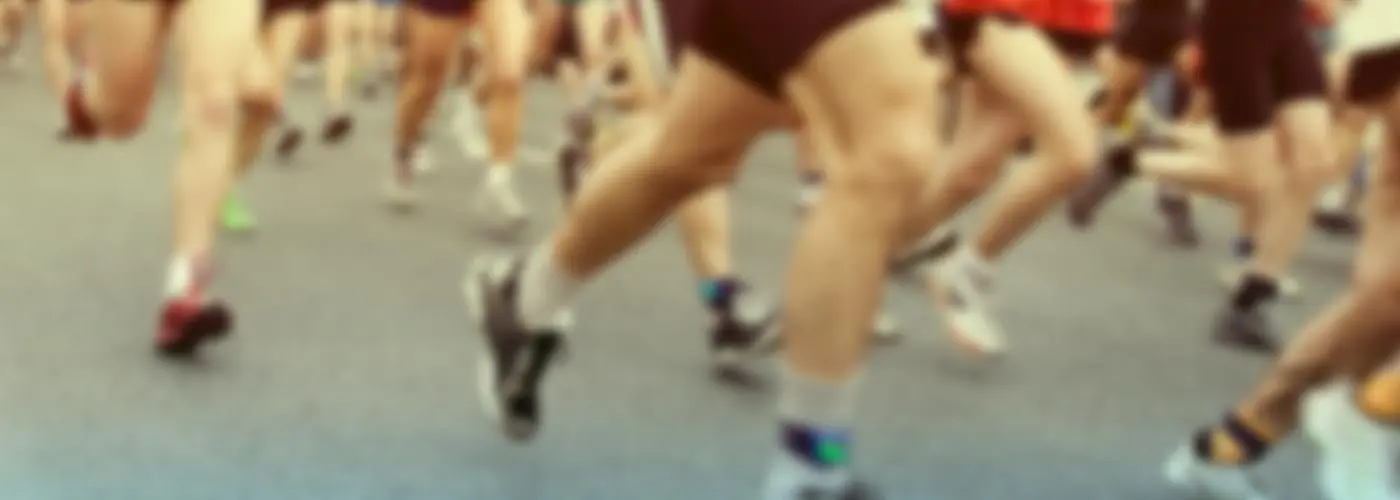
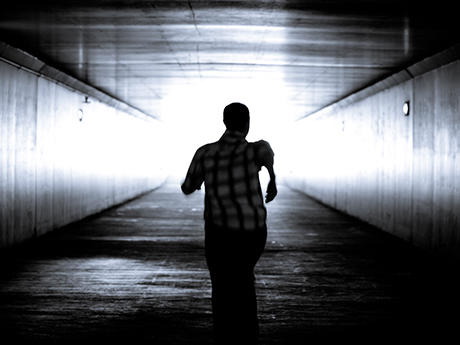





Discuss This Article